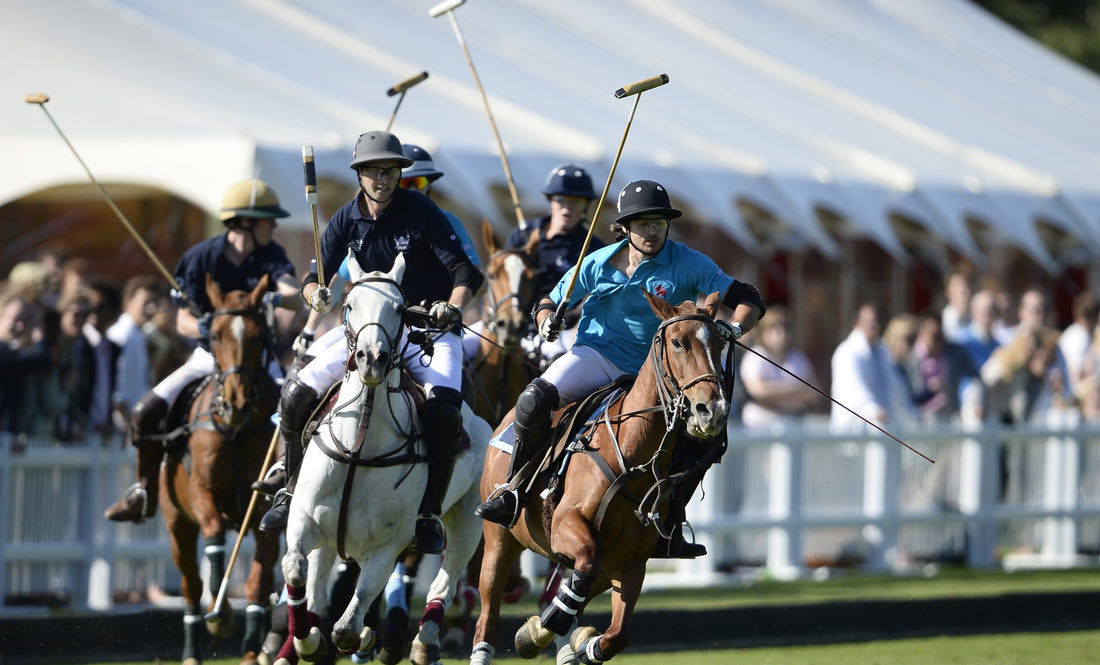
Polo. From sports to clothing culture
Share
Polo. From sports to clothing culture
Once limited to being a sport, polo has evolved into a clothing culture that fills the gap between athleticism and style. This transition is epitomized by the polo shirt, a garment that has been integrated into everyday fashion.
The sport of polo originated in ancient Persia and became popular in the British Empire in the 1800s. Players wore long-sleeved button-down shirts with ties to protect their heads from the sun. The standard polo shirt we wear today is based on these early versions.
Polo Sport. A brief overview.
Often referred to as the "sport of kings", polo has a rich history. Polo originated in ancient Persia (present-day Iran), where it was first practiced as an exercise for Persian cavalry units, later becoming a popular sport.

Later, the sport gradually spread to other regions, including Central Asia, China, and the Indian subcontinent. In each culture, the game was adapted and developed to incorporate local customs and traditions.
In the 19th century, British tea planters and military personnel stationed in India were introduced to the sport and eventually introduced it to the British Isles.
Polo grew in popularity in the late 19th and early 20th centuries. It gained a following among aristocrats, royalty, and elite social circles in Europe and the United States. Sports became associated with elegance, sophistication, and prestige.
Polo became an Olympic sport in the early 20th century. However, he did not stay on the list of Olympic athletes for long. It was last played as an Olympic sport in 1936 during the Berlin Olympics.
Polo remains a popular sport in various parts of the world, including Argentina, the United States, the United Kingdom, India, and Australia. It is played at multiple levels, from amateur to professional, and continues to be a symbol of luxury and sportsmanship.

The rules of polo
When playing in an open field, each team has 4 horse players, but when the game is played in an indoor arena, each team has 3 players.
A full game of polo consists of 4, 6, or 8 "chukkas". Each chukka involves seven minutes of play, after which the bell is rung and play continues for another 30 seconds or until the ball (now a white plastic or wooden ball originally made of willow) leaves the field. A break of three minutes is given between each chukka. Ponies (horses) usually do not play more than two chukkas.
Polo is the fastest ball game in the world. The fact that the players are sitting on a horse allows them to achieve high speed and ensures a quick transfer of the ball between players.
Centuries ago, in games played in Manipur, players were allowed to carry the ball around on horses, often leading to physical fights between the players. Later, that option was removed to avoid trouble.
Players hit the ball with a stick, each rider tries to take the ball to the opposite goal. After scoring a goal, the teams switch goals, which helps to neutralize territorial or weather advantages.
Polo shirts. where sport meets fashion
The history of polo shirts begins as a functional sportswear that eventually turned into a fashion item by accident.
The precursor to the modern polo shirt can be found in the clothing of polo players in the late 19th century. Polo, a sport of aristocratic origins, required players to wear comfortable yet elegant clothing that allowed easy horseback movement. These early shirts had a buttoned collar to keep the wind from flapping during the game. It was made from lightweight materials and a unique collar design.

The evolution of the polo shirt took a significant step forward in the 1920s when French tennis champion René Lacoste introduced the short-sleeved, cotton shirt for tennis. The Lacoste design, which features a buttoned pocket and a soft collar, was not only comfortable but also helped keep him from sweating during games. The shirt's design allowed players more freedom of movement compared to traditional tennis clothing.

The 1970s provided a significant shift for the polo shirt, especially in terms of design change. Ralph Lauren presented his version of the Polo Ralph Lauren polo shirt. This move transformed the shirt's status from mere sportswear to a symbol of luxury and sophistication.

In the 1980s, the global spread of polo shirts transcended borders and cultures. Various designers and brands have included the polo shirt in their collections, adapting it in different fabrics, colors, and styles. The shirt's versatility made it suitable for both casual and semi-formal occasions.
Today, polo shirts remain an integral part of modern fashion. Whether worn on the golf course, at work, or in everyday life, polo shirts continue to be fashion staples.
Polo's journey from sport to fashion speaks to its enduring value.
Tutunjian polo brand is also the bearer and continuation of polo culture.
We consider the mission of our company to strengthen the culture of polo in Armenia by creating a unique and original assortment that will satisfy the wishes of any capricious customer.
You can get acquainted with our unique range here.
